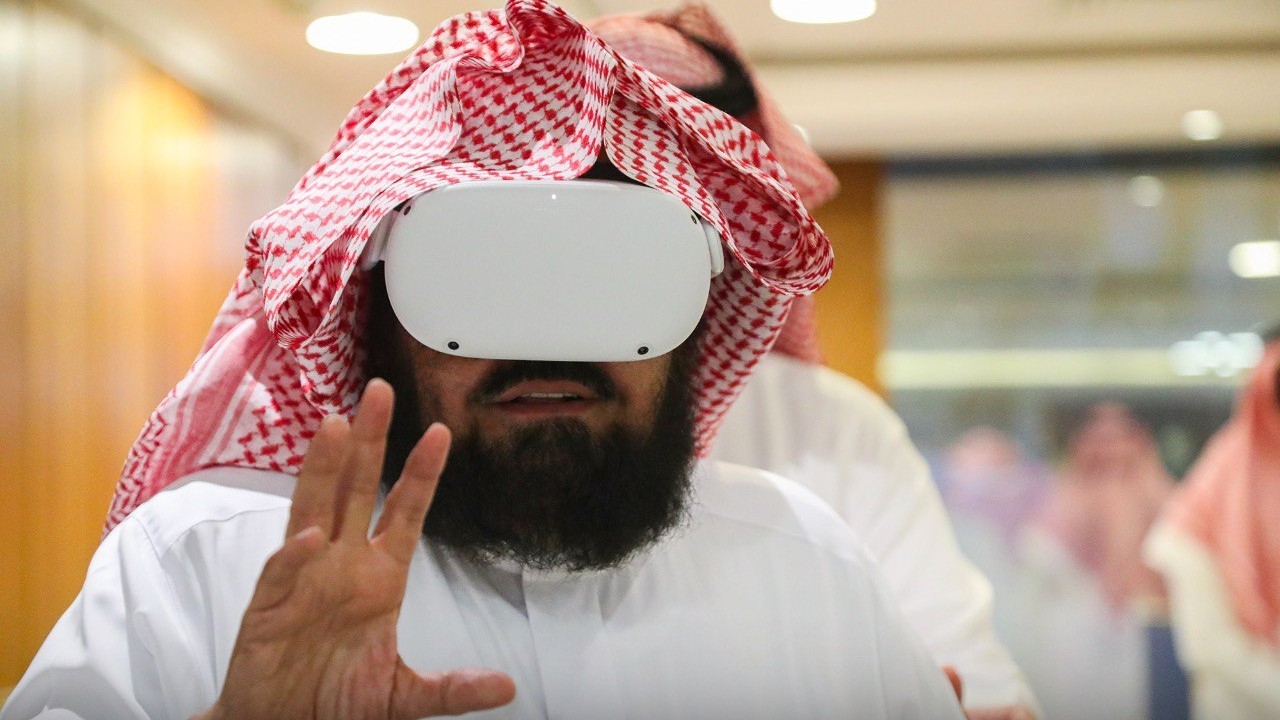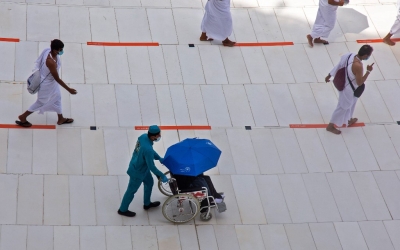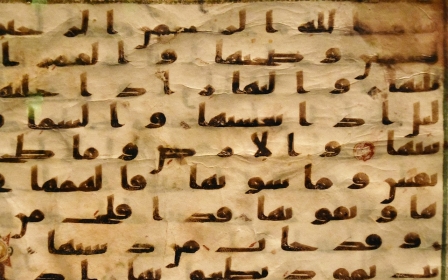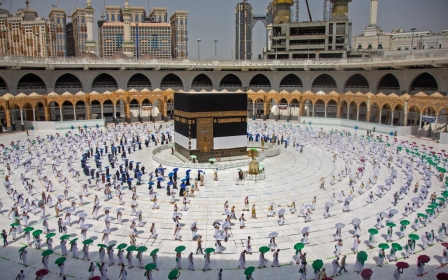Saudi Arabia launches VR initiative bringing Kaaba's Black Stone to Muslims' homes

Pilgrimage to Mecca brings millions of Muslims to Saudi Arabia every year. But now the kingdom has launched a virtual reality initiative that it says will allow Muslims to touch the Black Stone, a rock at the southeastern corner of the holy Kaaba, without leaving home.
Named the "Virtual Black Stone Initiative", the new VR technology would bring Islam's holiest site to Muslims' living rooms at a time when Covid-19 has hampered travel and Saudi authorities have limited pilgrim numbers to tackle the pandemic.
The 30cm-diameter rock at the Kaaba, known in Arabic as al-Hajr al-Aswad, is revered by Muslims, who believe it has fallen from heaven and dates back to the era of Adam and Eve.
Sheikh Abdul Rahman al-Sudais, the imam of the Grand Mosque in Mecca, was the first to experience the scheme, sporting virtual reality goggles for the inauguration last week.
Sudais said that Saudi Arabia has "great religious and historical sites that we must digitise and communicate to everyone through the means of the latest technology".
However, not everyone is happy with the initiative.
Some social media users saw the use of virtual reality technology in holy places as "tampering with religion" and "fiddling with God's Sharia", while others wondered if Muslims will perform pilgrimage, which requires circumambulating around the Kaaba, using VR goggles from their homes instead of going to Mecca.
All able-bodied Muslims are expected to perform Hajj, the major annual pilgrimage to Mecca, at least once in their lives.
In July, Saudi Arabia allowed only 60,000 citizens and residents, who were fully vaccinated, to perform Hajj, a figure falling from 2.5 million pilgrims in 2019, before the pandemic.
Earlier this month, Saudi Arabia detected its first case of Omicron, the new Covid-19 variant, and imposed a travel ban on non-citizens from seven African nations.
This isn't the first Black Stone-technology crossover Saudi Arabia has attempted this year.
In May, Saudi Arabia took 1,050 high-resolution photographs over seven hours of the Black Stone, which Muslims touch, kiss, or wave while walking past it.
The photographs, which were 49,000 megapixels in size, took more than 50 hours to develop, revealing in sharp focus the details of the holy relic, which was once white but has turned black over the centuries due to use.
This article is available in French on Middle East Eye French edition.
Middle East Eye delivers independent and unrivalled coverage and analysis of the Middle East, North Africa and beyond. To learn more about republishing this content and the associated fees, please fill out this form. More about MEE can be found here.





